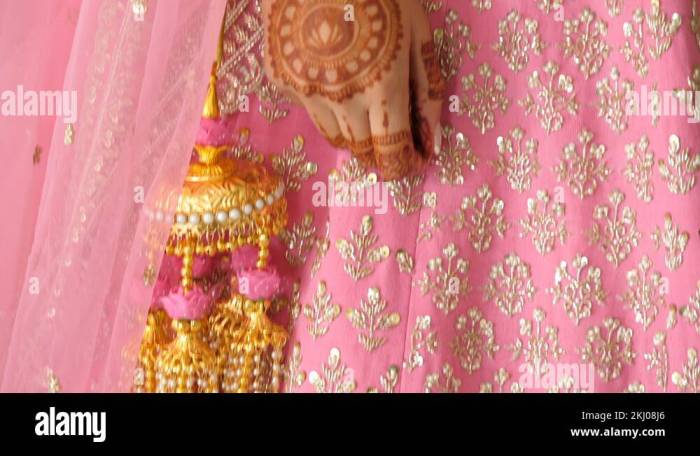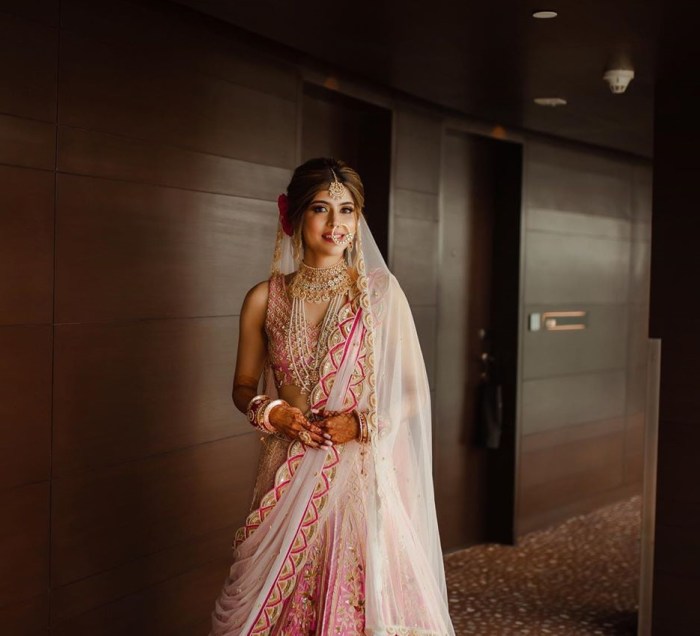Indian Pink Wedding Dress A Style Guide
Indian Pink Wedding Dresses: A Celebration of Color and Culture
The Indian wedding is a vibrant spectacle, a kaleidoscope of colors, traditions, and celebrations. And within this vibrant tapestry, the Indian pink wedding dress holds a special place, representing a unique blend of tradition, modernity, and individual style. This exploration delves into the aesthetic, cultural significance, and stylistic variations of this beautiful garment.
Understanding the “Indian Pink Wedding Dress” Aesthetic
Indian pink wedding dresses showcase a diverse range of design elements, reflecting regional styles and personal preferences. Common features include intricate embroidery, luxurious fabrics, and silhouettes that flatter the wearer’s figure. The cultural significance of pink, often associated with femininity, joy, and auspiciousness, further enhances the dress’s symbolic value.
Regional Variations in Style
The style of an Indian pink wedding dress varies significantly across different regions. For example, a bridal lehenga choli from Rajasthan might feature heavy embroidery and mirror work, while a Bengali bride might opt for a more understated saree with delicate embellishments. South Indian brides often favor silk sarees with intricate gold zari work. These regional differences highlight the rich tapestry of Indian culture.
Cultural Significance of Pink in Indian Weddings
Pink holds a significant cultural weight in Indian weddings. It symbolizes joy, new beginnings, and feminine grace. In many cultures, it’s considered an auspicious color, believed to bring good luck and prosperity to the newlyweds. The choice of pink often reflects the bride’s personality and her family’s traditions.
Traditional vs. Modern Interpretations of the Pink Wedding Dress
| Feature | Traditional | Modern |
|---|---|---|
| Fabric | Silk, brocade, Banarasi silk | Silk, net, georgette, crepe |
| Embellishments | Zari, gota patti, heavy embroidery | Minimalist embroidery, sequins, beads |
| Silhouette | Lehenga choli, saree | Lehenga choli, saree, gown, fusion styles |
| Color Palette | Deep pinks, rose pink | Pastel pinks, blush pink, fuchsia |
Fabrics and Embellishments
The fabrics and embellishments used in Indian pink wedding dresses are crucial in defining their overall look and feel. The choice of fabric influences the drape, texture, and overall richness of the garment, while embellishments add intricate detail and visual interest.
Common Fabrics and Embroidery Techniques
- Silk: A classic choice, known for its luxurious drape and sheen.
- Brocade: A richly textured fabric with intricate woven patterns.
- Zari: Metallic thread embroidery, adding a touch of opulence.
- Gota Patti: A traditional Rajasthani embellishment using metallic ribbons.
- Resham: Silk thread embroidery, creating delicate and intricate designs.
Embellishment Impact on Dress Appearance
The type and density of embellishments significantly impact the overall look. Heavy embroidery creates a dramatic and opulent effect, while minimalist embellishments offer a more subtle and sophisticated aesthetic. The placement of embellishments also plays a role, with strategically placed details enhancing specific features of the dress.
The vibrant hue of a pink Indian wedding dress is a stunning choice for the bride, often symbolizing joy and new beginnings. However, finding the perfect attire for guests can be equally important, and a great resource for inspiration is this website featuring formal Indian wedding guest dresses. Considering the overall wedding aesthetic, a guest could even subtly complement the bride’s pink ensemble with their own choice of outfit.
Example of Intricately Embroidered Dress

Source: alamy.com
Imagine a blush pink silk lehenga choli. The choli features delicate resham embroidery around the neckline and sleeves, while the lehenga skirt is adorned with a breathtaking floral pattern in zari and gota patti, cascading down from the waist in a mesmerizing display of artistry. The dupatta mirrors the lehenga’s intricate embroidery, creating a cohesive and stunning ensemble.
Color Variations and Shades of Pink
The spectrum of pink hues used in Indian wedding dresses is vast and varied, offering brides a wide range of options to suit their personal style and preferences. Different shades evoke different moods and aesthetics, contributing to the overall feel of the ensemble.
Shades of Pink and Their Associations
- Rose Pink: Romantic and classic.
- Fuchsia: Bold and vibrant.
- Blush Pink: Soft, delicate, and feminine.
- Coral Pink: Energetic and playful.
- Magenta: Dramatic and eye-catching.
Combining Shades of Pink for Unique Looks
Combining different shades of pink can create a unique and visually interesting effect. For example, a rose pink lehenga could be paired with a fuchsia dupatta, adding a pop of color and contrast. Blush pink and coral pink can be combined for a softer, more romantic look.
Silhouettes and Styles

Source: weddingsutra.com
The silhouette of an Indian pink wedding dress significantly impacts the overall aesthetic and how it flatters the wearer’s figure. The choice of silhouette is often influenced by personal preference, body type, and the overall style of the wedding.
Popular Silhouettes and Their Key Features
- Lehenga Choli: A two- or three-piece ensemble consisting of a flared skirt (lehenga), a fitted blouse (choli), and often a dupatta (scarf). It’s known for its versatility and flattering fit.
- Saree: A single, long piece of fabric draped elegantly around the body, creating a graceful and timeless look. The draping style can be customized to enhance the figure.
- Gown: A modern interpretation, offering a sleek and sophisticated silhouette. Gowns can be tailored to emphasize different aspects of the figure.
Accessories and Styling
Accessories play a crucial role in completing the look of an Indian pink wedding dress, adding detail and enhancing the overall aesthetic. The right accessories can complement the dress, creating a harmonious and stunning ensemble.
Accessories and Styling Choices
A complete bridal look might feature a blush pink silk lehenga choli with intricate zari embroidery. The accessories could include a statement kundan necklace, matching earrings, and bangles. A delicate maang tikka adds a touch of traditional elegance. The dupatta could be a lighter shade of pink, creating a soft contrast. The hair could be styled in a soft updo, adorned with fresh flowers, and the makeup should be natural and radiant, enhancing the bride’s natural beauty.
Essential Questionnaire
What is the best time of year to wear a pink Indian wedding dress?
The ideal time depends on the shade of pink and the fabric. Lighter pinks and breathable fabrics are suitable for warmer months, while richer pinks and heavier fabrics are better for cooler seasons.
How do I choose the right shade of pink for my complexion?
Consider your skin undertone. Cool undertones suit cooler pinks (rose, blush), while warm undertones complement warmer pinks (coral, fuchsia).
Can I customize an Indian pink wedding dress?
Absolutely! Many designers offer customization options, allowing you to personalize the fabric, embellishments, and silhouette to create a unique dress.
How do I care for my Indian pink wedding dress after the wedding?
Professional dry cleaning is recommended. Follow the care instructions provided by the designer or dry cleaner to preserve the dress’s condition.



















